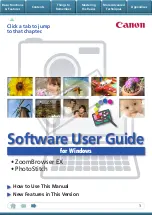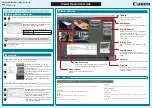
Windows Installer Editor Reference
384
Merge Modules and Transforms
If the Value drop-down list appears, select a value. It will be either a bitfield
value, a table, or text. If a text field appears its label indicates the type of data
you can enter:
Text Value
Enter any text.
Formatted Text Value
Enter any text in Windows Installer formatted text format.
RTF Value
Enter any text in rich text format.
Windows Installer Identifier Value
Enter text in the format of a Windows Installer identifier, which may contain
ASCII characters, digits, underscores, or periods, and must begin with either
a letter or an underscore.
For information on the format types listed above, see Text Format Types in the
Windows Installer SDK Help.
Integer Value
Enter any integer. See Integer Format Types in the Windows Installer SDK
Help.
For general information on configurable item types, see Semantic Types in the Windows
Installer SDK Help or see
Creating a Configurable Merge Module
on page 374.
Note
During compile, if the installation contains a merge module that cannot be located on
your system, you are prompted to download the merge module. This can happen if the
installation was created on a different computer or if you have moved your merge
modules directory.
See also:
Adding a Merge Module to an Installation
on page 381
About Transforms
A transform is a special kind of Windows Installer file (.MST) that customizes a Windows
Installer installation. You use it to change the installation in some way for a specific
group of end users. When you create a new transform, you must specify a standard
installation database (.MSI) on which to base the transform. Typically, a transform works
only with a specific installation.
Transforms must be run from the command line.
See
Applying a Transform to an Installation
on page 387.
Because it would be unwieldy to install all options for all groups of end users, you can
create one base .MSI, along with several transforms, each of which modifies the .MSI
database at installation to customize it for different groups.
Example: Suppose you are a system administrator who’s deploying a new version of
workgroup software. You can use transforms to customize the installation for the needs
of different departments. In each transform, you make changes to customize an
















































